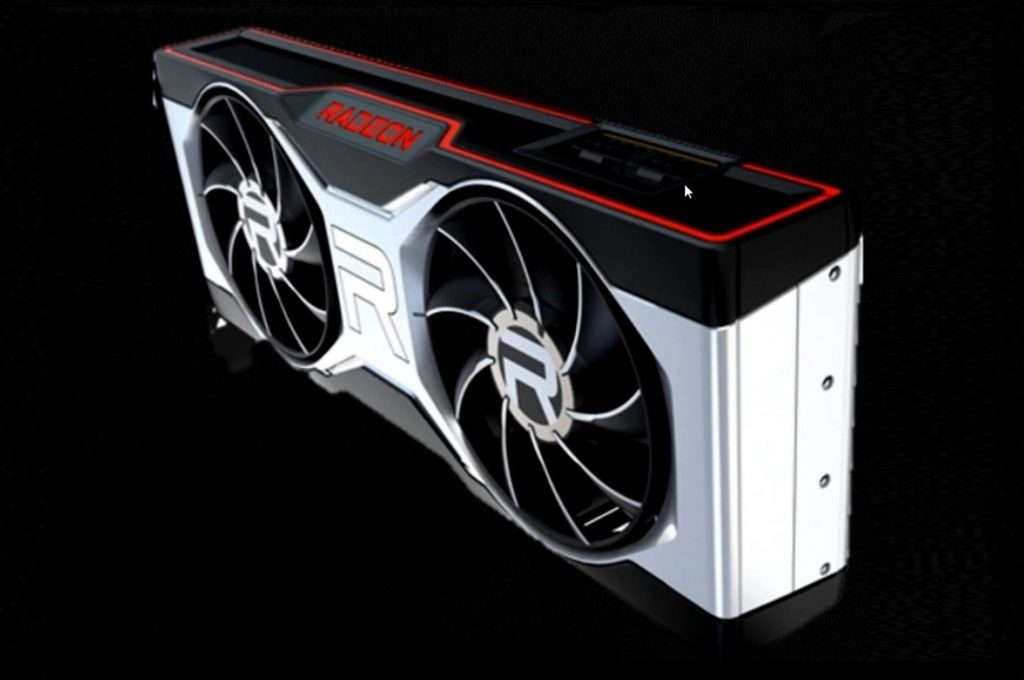Launch of mainstream RDNA 2 based AMD GPUs expected by the end of Q1 2021
Last autumn, the long-awaited new generation of graphics cards arrived, but at the start Nvidia and AMD have only released the more expensive SKUs. Now, in the winter and spring months of 2021, cheaper cards are finally supposed to arrive too. It seems that new cards belonging to the Radeon RX 6000 hierarchy should appear in about two and a half months, and both will build on the Navi 22 chip.
A French web Cowcotland brought news last week that AMD plans to release two more RX 6000-series graphics cards with RDNA 2 architecture towards the end of Q1 (of this year, of course). More precisely it is supposed to take place at the end of March. From what source exactly did Cowcotland take this information from, is not mentioned.
But the publication says these to-be-launched GPUs include Radeon RX 6700 XT and Radeon RX 6700. These should likely be competitors for the GeForce RTX 3060 and possibly the already released GeForce RTX 3060 Ti. It is not clear what the performance will be like. Therefore, we do not yet know whether AMD will be able to beat these two Nvidia models, in which case it could price the Radeons above them, or whether these cards will be slower and AMD will have to price lower.
Both cards should be based on a different chip than the first three models, they are going to use the Navi 22 die. This GPU continues to use the 7nm process node, likely with the same manufacturing technology and also the same RDNA 2 architecture. The chip should support the same features, so it should also offer ray tracing acceleration.
A render of what is likely the reference version of these cards has actually been leaked as far back as september. You can see it bellow. According to this depiction, the cooler will use two axial fans, and the card seems to be powered by two 8-pin connectors. This suggests that at least the RX 6700 XT could have a TDP higher than 225 W.
According to VideoCardz AMD reportedly wanted to announce these two Radeons this month, so if this is true, the company may have delayed their release, either voluntarily or being forced to. Nvidia is going to send its competitor into fray next month in the form of GeForce RTX 3060, which would give them an advantage. But AMD may not want to release a new cardin a situation where they cannot supply the stores with the already released RX 6800/6800 XT and RX 6900 XT models, anyway. The postponement could be made so as to ensure a larger supply of cards in stock for the launch. Similar reasons led to the delay of the GeForce RTX 3070 and RTX 3060 Ti from Nvidia.
Both cards reportedly have 12 GB of memory
The specifications are not yet known, but previous information from VideoCardz mentioned that the Radeon RX 6700 XT should use the full version of the chip, the Navi 22 XT, and therefore should have 2560 shaders (40 CU blocks, half of what the Navi 21 die in Radeon RX 6900 XT has). The GPU uses a 192-bit memory bus and 12 GB of GDDR6 memory. If 16.0 GHz chips were used, that would mean 384 GB/s bandwidth. The GPU is likely to also use the Infinity Cache technology, in which case the performance should not be too limited by this bandwidth. The memory capacity will be 12 GB.
There is less known about the slower Radeon RX 6700. It is likely that in its case the GPU’s configuration and thus performance will be cut down (it should use the Navi 22 XL variant). It could have, for example, 2304 or 2048 shaders and perhaps also a lower clock. However, the memory bus should remain 192-bit. It is not clear yet if this model will also receive a large memory capacity of 12GB.
TDP, frequency and prices are not yet known for either card. The price range could be somewhere between $300 and $450. But that’s just a very rough estimate, and moreover, if the availability is going to be poor, the recommended prices won’t apply anyway.
English translation and edit by Lukáš Terényi
